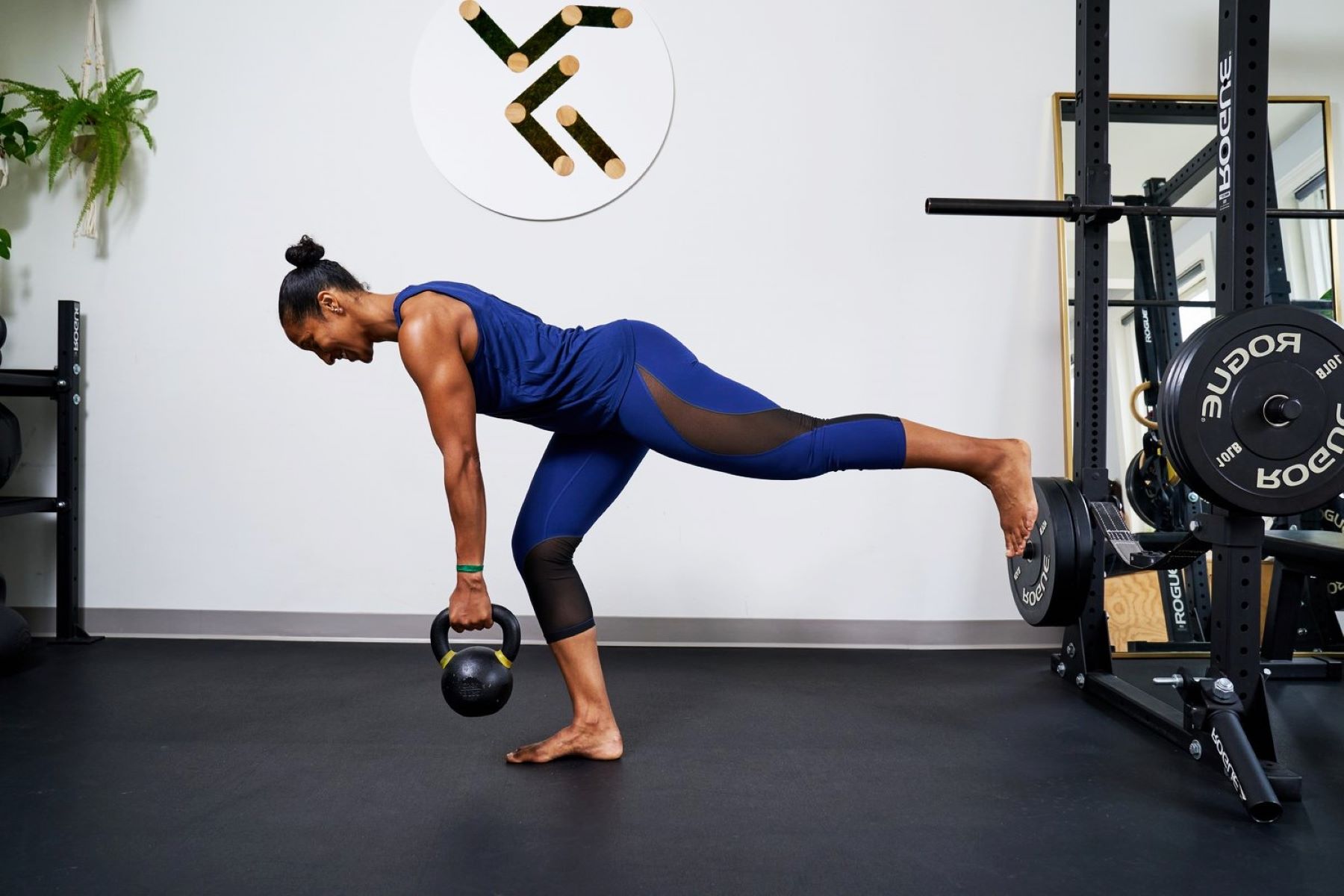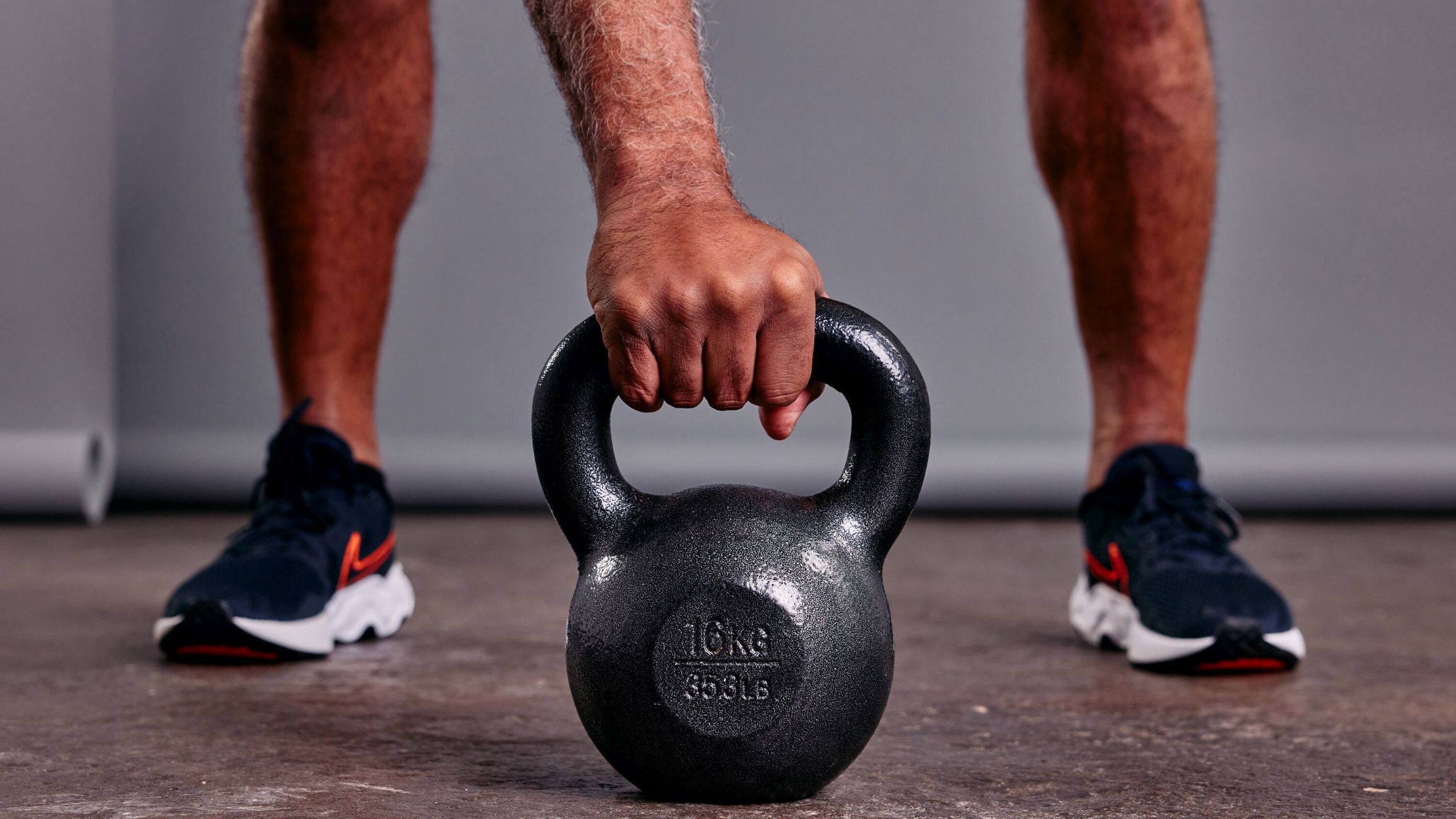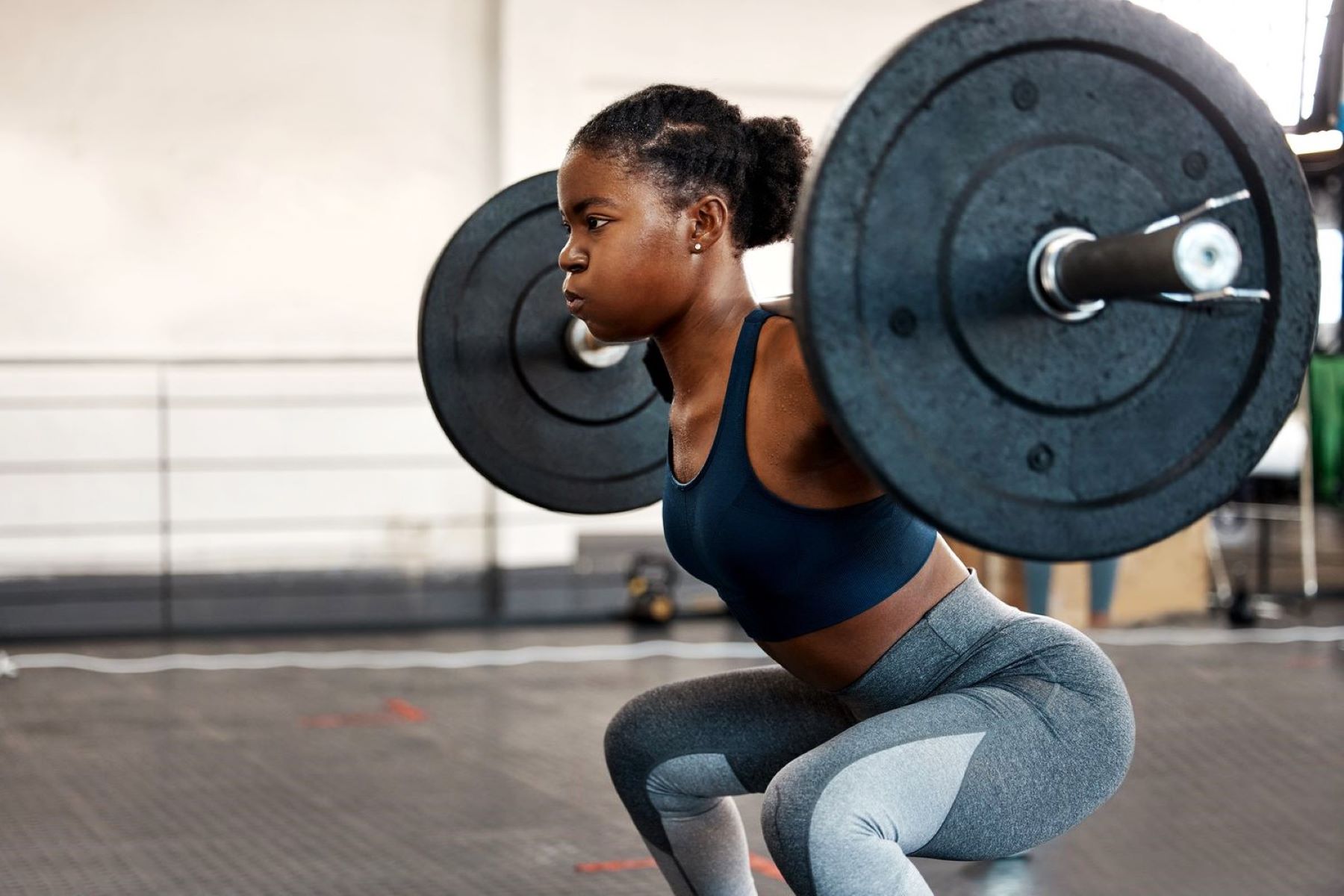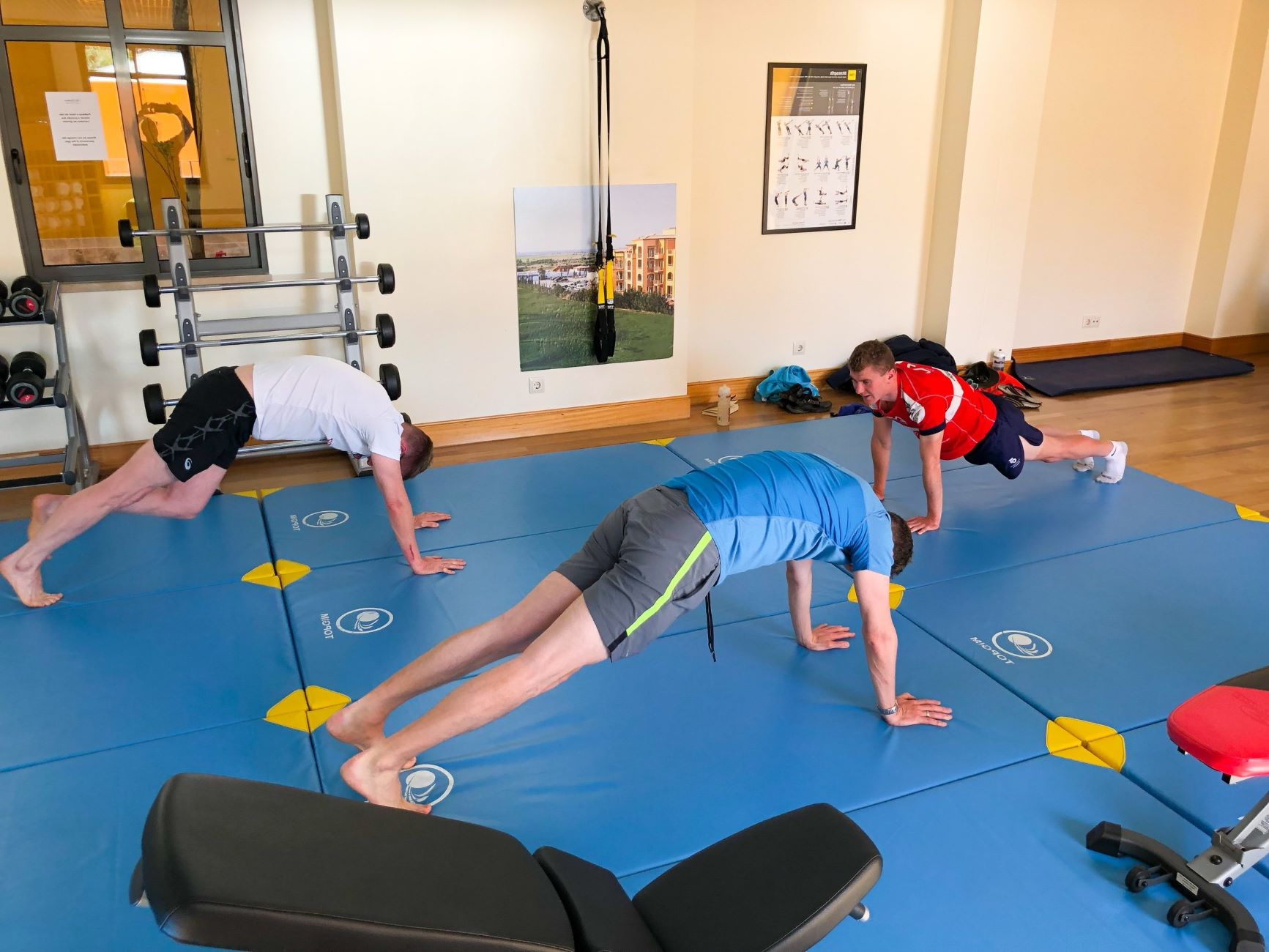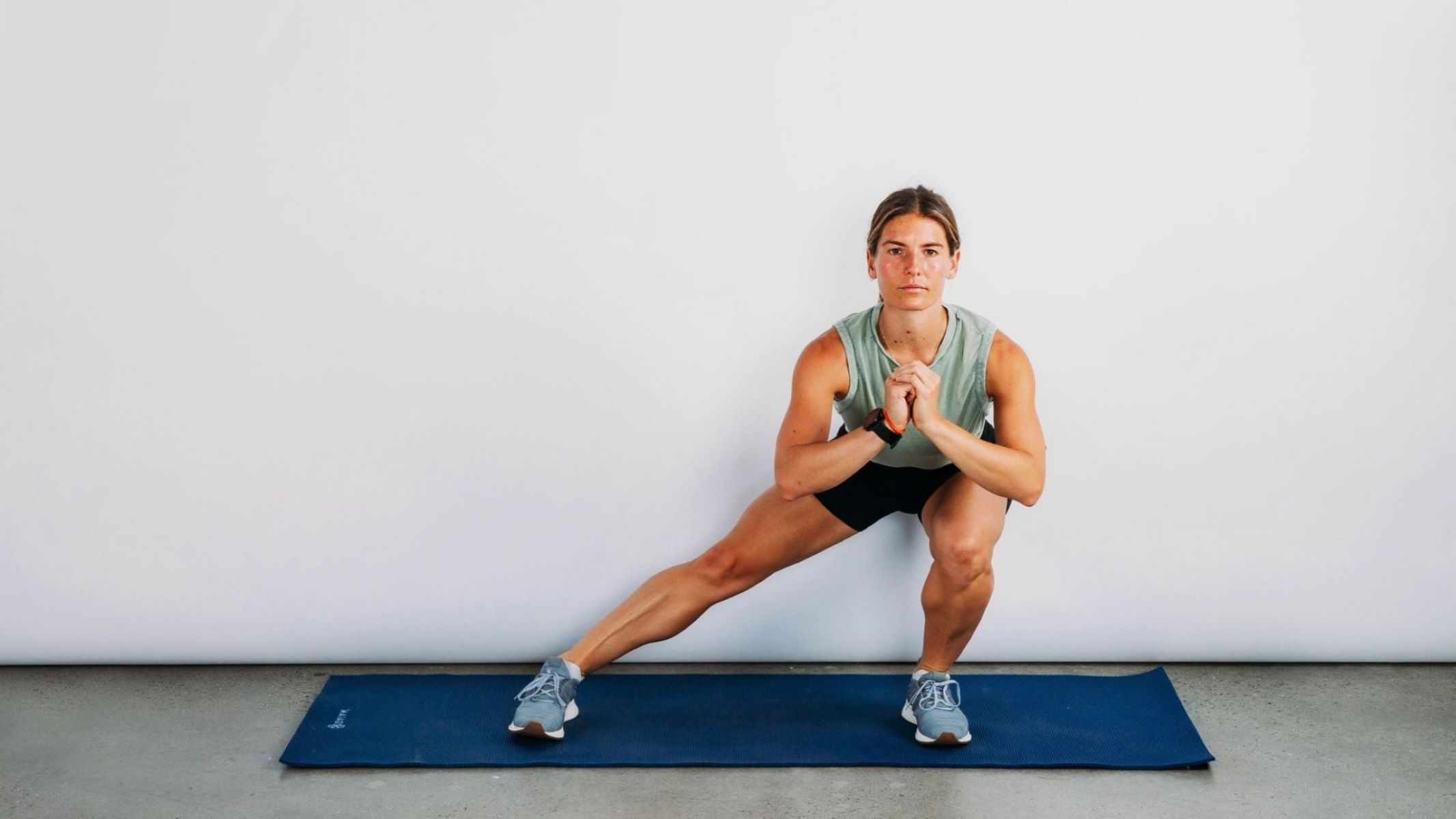Home>Training & Techniques>9 Ineffective Strength Training Exercises
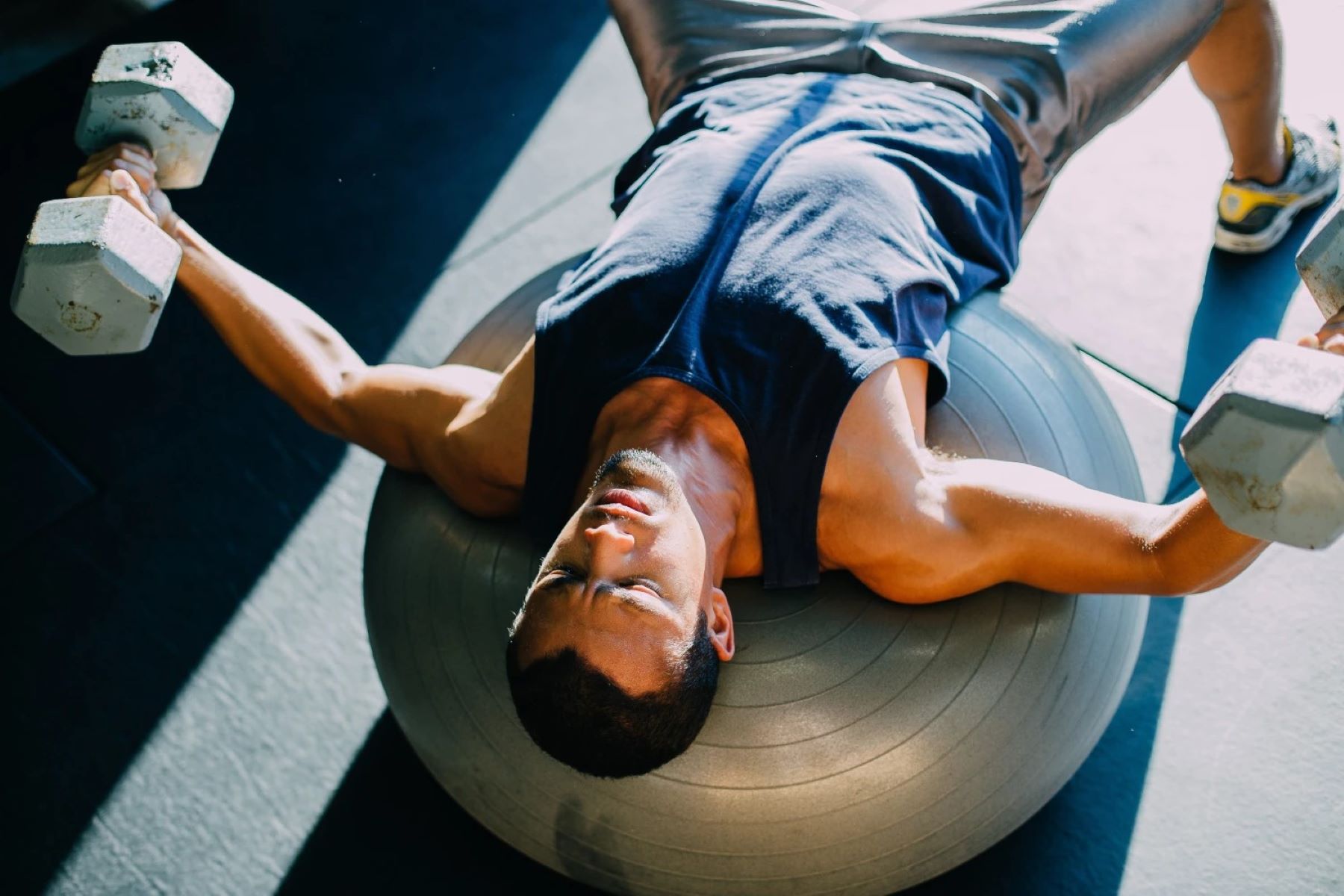

Training & Techniques
9 Ineffective Strength Training Exercises
Published: March 5, 2024
Discover 9 ineffective strength training exercises and learn valuable training & techniques to optimize your workout routine. Avoid common mistakes and achieve better results.
(Many of the links in this article redirect to a specific reviewed product. Your purchase of these products through affiliate links helps to generate commission for Therunningadvisor.com, at no extra cost. Learn more)
Table of Contents
- Introduction
- The Dangers of Ineffective Strength Training
- Ineffective Exercise 1: Bicep Curls with Incorrect Form
- Ineffective Exercise 2: Smith Machine Squats
- Ineffective Exercise 3: Behind-the-Neck Shoulder Press
- Ineffective Exercise 4: Seated Leg Extension Machine
- Ineffective Exercise 5: Upright Rows with a Barbell
- Ineffective Exercise 6: Machine Chest Flyes
- Ineffective Exercise 7: Standing Leg Curl Machine
- Ineffective Exercise 8: Tricep Dips with Incorrect Technique
- Ineffective Exercise 9: Abdominal Crunches with Neck Strain
Introduction
Strength training is a vital component of a well-rounded fitness regimen, offering a multitude of benefits such as increased muscle mass, improved metabolism, enhanced bone density, and overall functional strength. However, not all strength training exercises are created equal. In fact, some exercises, when performed incorrectly, can be not only ineffective but also potentially harmful. This article aims to shed light on nine common strength training exercises that are often performed ineffectively, leading to suboptimal results and an increased risk of injury.
By identifying these ineffective exercises and understanding the potential dangers associated with improper execution, individuals can make informed decisions about their workout routines and take proactive measures to maximize the effectiveness of their strength training efforts. Whether you're a seasoned gym enthusiast or a newcomer to the world of fitness, being aware of these ineffective exercises is crucial for optimizing your workouts and safeguarding your physical well-being.
In the following sections, we will delve into each of these exercises, highlighting the common mistakes that are frequently made and the potential repercussions of improper form. By gaining a deeper understanding of these ineffective exercises, readers will be empowered to make informed choices about their fitness routines, thereby minimizing the risk of injury and maximizing the benefits of their strength training endeavors.
It's important to note that while the exercises discussed in this article may be ineffective when performed incorrectly, they can still be valuable components of a well-rounded strength training program when executed with proper form and technique. By emphasizing the significance of proper execution, this article aims to equip readers with the knowledge and awareness necessary to derive optimal results from their strength training endeavors while mitigating the risk of injury.
Read more: 6 Easy Strength Exercises For Older Runners
The Dangers of Ineffective Strength Training
Ineffective strength training poses a myriad of risks that can compromise both physical well-being and fitness progress. When individuals engage in strength training exercises with improper form or technique, they not only diminish the effectiveness of their workouts but also expose themselves to potential injuries. Understanding the dangers associated with ineffective strength training is paramount for anyone striving to achieve optimal results while safeguarding their physical health.
One of the primary dangers of ineffective strength training is the heightened risk of musculoskeletal injuries. Performing exercises with incorrect form can place undue stress on joints, tendons, and ligaments, leading to strains, sprains, and even more severe injuries such as muscle tears or joint dislocations. Moreover, the repetitive nature of strength training exercises amplifies the importance of proper form, as consistent improper execution can exacerbate the risk of chronic overuse injuries, including tendonitis and bursitis.
In addition to the physical risks, ineffective strength training can impede progress and hinder the attainment of fitness goals. When exercises are performed incorrectly, the intended muscle groups may not be adequately targeted, resulting in suboptimal muscle activation and development. This can lead to frustration and disillusionment as individuals fail to see the desired progress despite their dedicated efforts. Furthermore, ineffective strength training may contribute to imbalances in muscle development, which can compromise overall functional strength and increase the likelihood of compensatory movements that further perpetuate the risk of injury.
Beyond the immediate physical and physiological implications, ineffective strength training can also have psychological repercussions. Frustration, disappointment, and a sense of disillusionment may arise when individuals fail to achieve the desired results despite their commitment to regular strength training. This can lead to a decline in motivation and adherence to fitness routines, ultimately hindering overall well-being and long-term health outcomes.
By recognizing the dangers associated with ineffective strength training, individuals can prioritize the acquisition of proper form and technique, thereby mitigating the risks of injury and optimizing the effectiveness of their workouts. Through education, awareness, and a commitment to executing exercises with precision, individuals can harness the full benefits of strength training while minimizing the potential pitfalls associated with improper execution.
Ineffective Exercise 1: Bicep Curls with Incorrect Form
Bicep curls are a quintessential strength training exercise, often hailed as a go-to movement for targeting the biceps and achieving sculpted arms. However, when performed with incorrect form, this seemingly straightforward exercise can lead to suboptimal results and an increased risk of injury. One of the most common mistakes associated with bicep curls is the utilization of momentum to lift the weight, rather than relying on the targeted muscles to perform the movement.
When individuals swing or jerk the weights during bicep curls, they compromise the isolation of the biceps and engage secondary muscle groups, such as the shoulders and back, to assist in lifting the load. This not only diminishes the effectiveness of the exercise in targeting the biceps but also increases the risk of strain and injury to the supporting muscle groups. Furthermore, using momentum to lift the weights reduces the time under tension experienced by the biceps, which is crucial for stimulating muscle growth and strength development.
Another common error in bicep curls is the failure to maintain proper posture throughout the movement. Rounded shoulders, excessive leaning, and overarching of the lower back are prevalent deviations from the ideal form. These postural misalignments not only detract from the targeted engagement of the biceps but also place undue stress on the spine and supporting musculature, potentially leading to discomfort and injury over time.
To execute bicep curls with correct form, individuals should maintain a stable and upright posture, with the shoulders pulled back and the core engaged to support the spine. The movement should be initiated from a fully extended elbow position, with the biceps being the primary drivers of the lifting phase. By emphasizing controlled and deliberate movements, individuals can ensure that the biceps are effectively engaged throughout the exercise, maximizing the muscle-building stimulus and minimizing the risk of injury.
In summary, performing bicep curls with incorrect form, characterized by the use of momentum and compromised posture, can undermine the effectiveness of the exercise and elevate the risk of musculoskeletal injuries. By prioritizing proper form and technique, individuals can optimize the benefits of bicep curls, fostering enhanced muscle development and reducing the likelihood of experiencing discomfort or injury associated with improper execution.
Ineffective Exercise 2: Smith Machine Squats
Smith machine squats are a popular strength training exercise that is often utilized to target the muscles of the lower body, particularly the quadriceps, hamstrings, and glutes. However, when performed with incorrect form, this exercise can lead to suboptimal results and an increased risk of injury. The Smith machine, which features a guided barbell within a fixed vertical pathway, is commonly used for squats due to its perceived stability and support. However, the fixed nature of the barbell's pathway can inadvertently promote unnatural movement patterns and compromise the body's biomechanics during the squatting motion.
One of the primary issues associated with Smith machine squats is the constrained range of motion imposed by the fixed barbell pathway. Unlike free weight squats, which allow for natural and unrestricted movement in multiple planes, Smith machine squats restrict the body to a predetermined vertical path. This limitation can hinder the activation of stabilizing muscles and diminish the engagement of synergistic muscle groups that contribute to overall lower body strength and stability. Furthermore, the fixed barbell pathway may compel individuals to adopt an unnatural stance or posture to accommodate the equipment, potentially leading to biomechanical imbalances and increased stress on the joints.
Another common pitfall of Smith machine squats is the tendency for individuals to place excessive pressure on the knees by leaning too far forward during the descent phase. The fixed nature of the barbell's trajectory may encourage individuals to deviate from the ideal squatting mechanics, leading to anterior displacement of the knees beyond the toes. This movement pattern can place undue stress on the knee joints and compromise the integrity of the squat, potentially increasing the risk of discomfort and injury.
To execute squats with correct form and technique, individuals should prioritize free weight squats using a barbell or dumbbells, allowing for natural movement patterns and unrestricted range of motion. By performing squats without the constraints of a fixed barbell pathway, individuals can engage stabilizing muscles, activate synergistic muscle groups, and maintain proper biomechanics throughout the exercise. Additionally, emphasizing proper squatting mechanics, such as maintaining a neutral spine, tracking the knees in line with the toes, and distributing the weight evenly across the feet, is essential for optimizing the effectiveness of the exercise and minimizing the risk of injury.
In summary, performing Smith machine squats with incorrect form, characterized by constrained range of motion and compromised biomechanics, can undermine the effectiveness of the exercise and elevate the risk of musculoskeletal injuries. By prioritizing free weight squats and emphasizing proper form and technique, individuals can optimize the benefits of squats, fostering enhanced lower body strength and stability while reducing the likelihood of experiencing discomfort or injury associated with improper execution.
Ineffective Exercise 3: Behind-the-Neck Shoulder Press
The behind-the-neck shoulder press is a strength training exercise that targets the deltoid muscles of the shoulders, aiming to enhance upper body strength and muscular development. However, despite its prevalence in workout routines, the behind-the-neck shoulder press is often performed with incorrect form, leading to suboptimal results and an increased risk of injury.
One of the primary issues associated with the behind-the-neck shoulder press is the potential for compromised shoulder mechanics and increased stress on the shoulder joints. When individuals perform this exercise by lowering the barbell behind the neck, they may inadvertently place the shoulders in a vulnerable position, particularly if they lack the requisite shoulder mobility and flexibility. This can lead to excessive strain on the shoulder joints and surrounding soft tissues, potentially increasing the risk of discomfort, impingement, or more severe shoulder injuries over time.
Furthermore, the behind-the-neck shoulder press can contribute to poor spinal alignment and posture, especially when individuals are unable to maintain a stable and neutral position throughout the exercise. The act of pressing the weight behind the neck may prompt individuals to arch the lower back excessively or tilt the head forward, leading to potential spinal misalignments and increased stress on the cervical spine. These deviations from proper spinal alignment can not only compromise the effectiveness of the exercise but also elevate the risk of discomfort and injury to the spine and surrounding musculature.
To execute shoulder presses with correct form and technique, individuals should prioritize the traditional shoulder press, where the barbell or dumbbells are pressed overhead from the front of the body. This variation allows for a more natural and biomechanically sound movement pattern, reducing the risk of shoulder impingement and promoting optimal engagement of the deltoid muscles. Additionally, by emphasizing proper shoulder mechanics, such as maintaining a stable and neutral spine, and avoiding excessive arching or tilting of the head, individuals can optimize the effectiveness of the exercise while minimizing the risk of injury to the shoulders and spine.
In summary, performing the behind-the-neck shoulder press with incorrect form, characterized by compromised shoulder mechanics and poor spinal alignment, can undermine the effectiveness of the exercise and elevate the risk of musculoskeletal injuries. By prioritizing the traditional shoulder press and emphasizing proper form and technique, individuals can optimize the benefits of shoulder presses, fostering enhanced shoulder strength and muscular development while reducing the likelihood of experiencing discomfort or injury associated with improper execution.
Ineffective Exercise 4: Seated Leg Extension Machine
The seated leg extension machine is a popular choice for targeting the quadriceps, offering a seemingly straightforward method for isolating and strengthening the muscles of the front thigh. However, despite its widespread use, this exercise is often performed with incorrect form, leading to suboptimal results and an increased risk of injury.
One of the primary issues associated with the seated leg extension machine is the potential for excessive stress on the knee joint. When individuals perform leg extensions with improper form, such as using momentum to lift the weight or locking out the knees at the top of the movement, they may subject the knee joint to undue pressure and shear forces. This can lead to discomfort, strain, or even more severe knee injuries, particularly if the exercise is performed with excessively heavy weights or in a jerky, uncontrolled manner.
Furthermore, the seated position inherent to this exercise can contribute to poor spinal alignment and posture, especially if individuals fail to maintain proper back support and pelvic stability throughout the movement. Leaning back excessively or arching the lower back during leg extensions can lead to spinal misalignments and increased stress on the lumbar region, potentially predisposing individuals to discomfort or injury in the lower back.
To execute leg extensions with correct form and technique, individuals should prioritize alternative exercises that engage the quadriceps while minimizing the risk of knee strain and spinal stress. Compound movements such as squats, lunges, or step-ups can effectively target the quadriceps while promoting overall lower body strength and stability. Additionally, incorporating exercises that emphasize functional movement patterns, such as bodyweight squats or resistance band leg presses, can provide a more holistic approach to quadriceps development while reducing the potential risks associated with the seated leg extension machine.
In summary, performing leg extensions on the seated leg extension machine with incorrect form, characterized by excessive stress on the knee joint and compromised spinal alignment, can undermine the effectiveness of the exercise and elevate the risk of musculoskeletal injuries. By prioritizing alternative exercises and emphasizing proper form and technique, individuals can optimize the benefits of quadriceps training, fostering enhanced lower body strength and stability while reducing the likelihood of experiencing discomfort or injury associated with improper execution.
Ineffective Exercise 5: Upright Rows with a Barbell
Upright rows with a barbell are a commonly performed exercise aimed at targeting the muscles of the shoulders and upper back. However, despite its popularity, this exercise is often executed with incorrect form, leading to suboptimal results and an increased risk of injury.
One of the primary issues associated with upright rows is the potential for impingement and discomfort in the shoulder joints. When individuals perform this exercise with a narrow grip and lift the barbell close to the body, they may inadvertently place excessive stress on the shoulder joints, particularly the rotator cuff tendons. This can lead to discomfort, impingement, or even more severe shoulder injuries, especially if individuals lack the requisite shoulder mobility and fail to maintain proper scapular mechanics throughout the movement.
Furthermore, the repetitive nature of upright rows, especially when performed with heavy weights, can exacerbate the risk of shoulder impingement and compromise the integrity of the shoulder joints over time. Individuals who exhibit poor scapular control or lack the necessary shoulder mobility may be particularly susceptible to the adverse effects of upright rows, potentially leading to chronic discomfort and diminished shoulder function.
To execute upright rows with correct form and technique, individuals should prioritize alternative exercises that target the shoulders and upper back while minimizing the risk of shoulder impingement. Lateral raises, front raises, or bent-over lateral raises can effectively engage the deltoid muscles without subjecting the shoulder joints to the potential stress associated with upright rows. Additionally, incorporating exercises that emphasize scapular stability and shoulder mobility, such as face pulls or external rotations, can provide a more comprehensive approach to shoulder health and function while reducing the likelihood of experiencing discomfort or injury.
In summary, performing upright rows with a barbell with incorrect form, characterized by potential shoulder impingement and compromised scapular mechanics, can undermine the effectiveness of the exercise and elevate the risk of musculoskeletal injuries. By prioritizing alternative exercises and emphasizing proper form and technique, individuals can optimize the benefits of shoulder and upper back training, fostering enhanced muscular development and shoulder function while reducing the potential risks associated with upright rows.
Ineffective Exercise 6: Machine Chest Flyes
Machine chest flyes are a popular strength training exercise that targets the pectoral muscles, offering a controlled and isolated movement for enhancing chest development. However, despite its widespread inclusion in workout routines, machine chest flyes are often performed with incorrect form, leading to suboptimal results and an increased risk of injury.
One of the primary issues associated with machine chest flyes is the potential for excessive stress on the shoulder joints. When individuals perform this exercise with improper form, such as using momentum to move the handles or allowing the shoulders to roll forward during the movement, they may subject the shoulder joints to undue pressure and compromised stability. This can lead to discomfort, strain, or even more severe shoulder injuries, particularly if the exercise is performed with excessively heavy resistance or in a jerky, uncontrolled manner.
Furthermore, the fixed pathway of the machine chest flye equipment may inadvertently promote unnatural movement patterns and compromise the body's biomechanics during the exercise. Unlike free weight chest flyes, which require stabilization and coordination of multiple muscle groups, machine chest flyes restrict the movement to a predetermined path, potentially limiting the activation of stabilizing muscles and synergistic muscle groups that contribute to overall chest strength and stability.
To execute chest flyes with correct form and technique, individuals should prioritize free weight variations using dumbbells or cables, allowing for a more natural and unrestricted range of motion. Free weight chest flyes engage the stabilizing muscles of the shoulders and core to a greater extent, promoting functional strength and coordination while reducing the risk of overloading the shoulder joints. Additionally, emphasizing proper chest flye mechanics, such as maintaining a stable shoulder position and controlling the movement through a full range of motion, is essential for optimizing the effectiveness of the exercise and minimizing the risk of injury to the shoulders and chest muscles.
In summary, performing machine chest flyes with incorrect form, characterized by potential shoulder strain and compromised biomechanics, can undermine the effectiveness of the exercise and elevate the risk of musculoskeletal injuries. By prioritizing free weight chest flyes and emphasizing proper form and technique, individuals can optimize the benefits of chest training, fostering enhanced muscular development and chest strength while reducing the likelihood of experiencing discomfort or injury associated with improper execution.
Ineffective Exercise 7: Standing Leg Curl Machine
The standing leg curl machine is a popular choice for targeting the hamstrings, offering a controlled and isolated movement to enhance the strength and development of the muscles at the back of the thigh. However, despite its prevalence in workout routines, the standing leg curl machine is often performed with incorrect form, leading to suboptimal results and an increased risk of injury.
One of the primary issues associated with the standing leg curl machine is the potential for compromised biomechanics and excessive stress on the knee joint. When individuals perform leg curls with improper form, such as using momentum to swing the weight or failing to maintain proper alignment of the knee joint throughout the movement, they may subject the knee joint to undue pressure and shear forces. This can lead to discomfort, strain, or even more severe knee injuries, particularly if the exercise is performed with excessively heavy resistance or in a jerky, uncontrolled manner.
Furthermore, the standing position inherent to this exercise may inadvertently promote unnatural movement patterns and compromise the body's biomechanics during the leg curl motion. Unlike lying leg curls, which provide support for the lower back and encourage a more stable and controlled movement, the standing leg curl machine may place additional demands on the core and stabilizing muscles to maintain proper posture and alignment. Individuals who lack the necessary core stability and control may be particularly susceptible to the adverse effects of standing leg curls, potentially leading to compromised form and increased risk of discomfort or injury.
To execute leg curls with correct form and technique, individuals should prioritize alternative exercises that effectively target the hamstrings while minimizing the risk of knee strain and compromised biomechanics. Lying leg curls using a machine or resistance bands can provide a more supportive and controlled environment for targeting the hamstrings, allowing individuals to maintain proper alignment of the knee joint and minimize the risk of excessive stress on the knees. Additionally, incorporating exercises that emphasize core stability and hip hinge mechanics, such as Romanian deadlifts or stability ball leg curls, can offer a more comprehensive approach to hamstring development while reducing the potential risks associated with the standing leg curl machine.
In summary, performing leg curls on the standing leg curl machine with incorrect form, characterized by potential knee strain and compromised biomechanics, can undermine the effectiveness of the exercise and elevate the risk of musculoskeletal injuries. By prioritizing alternative exercises and emphasizing proper form and technique, individuals can optimize the benefits of hamstring training, fostering enhanced lower body strength and stability while reducing the likelihood of experiencing discomfort or injury associated with improper execution.
Ineffective Exercise 8: Tricep Dips with Incorrect Technique
Tricep dips are a renowned strength training exercise that targets the triceps, shoulders, and chest, offering a challenging yet effective method for enhancing upper body strength and muscular development. However, despite their popularity, tricep dips are often performed with incorrect technique, leading to suboptimal results and an increased risk of injury.
One of the primary issues associated with tricep dips is the potential for excessive stress on the shoulder joints. When individuals perform this exercise with improper form, such as allowing the shoulders to excessively elevate or internally rotate during the movement, they may subject the shoulder joints to undue pressure and compromised stability. This can lead to discomfort, strain, or even more severe shoulder injuries, particularly if the exercise is performed with excessively heavy resistance or in a manner that deviates from the ideal shoulder mechanics.
Furthermore, the repetitive nature of tricep dips, especially when performed with improper technique, can exacerbate the risk of shoulder impingement and compromise the integrity of the shoulder joints over time. Individuals who exhibit poor scapular control or lack the necessary shoulder stability may be particularly susceptible to the adverse effects of tricep dips, potentially leading to chronic discomfort and diminished shoulder function.
To execute tricep dips with correct technique, individuals should prioritize alternative exercises that effectively target the triceps while minimizing the risk of shoulder strain and compromised mechanics. Close-grip push-ups, tricep pushdowns, or bench dips can provide effective alternatives for engaging the triceps without subjecting the shoulders to the potential stress associated with tricep dips. Additionally, incorporating exercises that emphasize scapular stability and shoulder mobility, such as scapular retractions and shoulder external rotations, can offer a more comprehensive approach to shoulder health and function while reducing the likelihood of experiencing discomfort or injury.
In summary, performing tricep dips with incorrect technique, characterized by potential shoulder strain and compromised scapular mechanics, can undermine the effectiveness of the exercise and elevate the risk of musculoskeletal injuries. By prioritizing alternative exercises and emphasizing proper technique, individuals can optimize the benefits of tricep training, fostering enhanced muscular development and shoulder function while reducing the potential risks associated with tricep dips.
Ineffective Exercise 9: Abdominal Crunches with Neck Strain
Abdominal crunches are a ubiquitous component of core-focused workout routines, aiming to strengthen the rectus abdominis and enhance overall core stability. However, when performed with incorrect form, abdominal crunches can lead to suboptimal results and an increased risk of neck strain.
One of the primary issues associated with abdominal crunches is the potential for excessive strain on the neck muscles. When individuals perform this exercise with improper form, such as pulling on the neck with interlaced fingers or using momentum to lift the upper body, they may subject the neck to undue stress and compromised stability. This can lead to discomfort, strain, or even more severe neck injuries, particularly if the exercise is performed with excessive force or in a manner that deviates from the ideal neck mechanics.
Furthermore, the repetitive nature of abdominal crunches, especially when performed with improper technique, can exacerbate the risk of neck strain and compromise the integrity of the cervical spine over time. Individuals who exhibit poor neck control or lack the necessary stability may be particularly susceptible to the adverse effects of abdominal crunches, potentially leading to chronic discomfort and diminished neck function.
To execute abdominal crunches with correct form and technique, individuals should prioritize alternative exercises that effectively target the abdominal muscles while minimizing the risk of neck strain. Plank variations, such as forearm planks or side planks, can provide effective alternatives for engaging the core without subjecting the neck to the potential stress associated with traditional abdominal crunches. Additionally, incorporating exercises that emphasize proper neck alignment and stability, such as cervical retractions and isometric neck exercises, can offer a more comprehensive approach to neck health and function while reducing the likelihood of experiencing discomfort or injury.
In summary, performing abdominal crunches with incorrect form, characterized by potential neck strain and compromised mechanics, can undermine the effectiveness of the exercise and elevate the risk of musculoskeletal injuries. By prioritizing alternative exercises and emphasizing proper technique, individuals can optimize the benefits of core training, fostering enhanced muscular development and neck function while reducing the potential risks associated with abdominal crunches.

